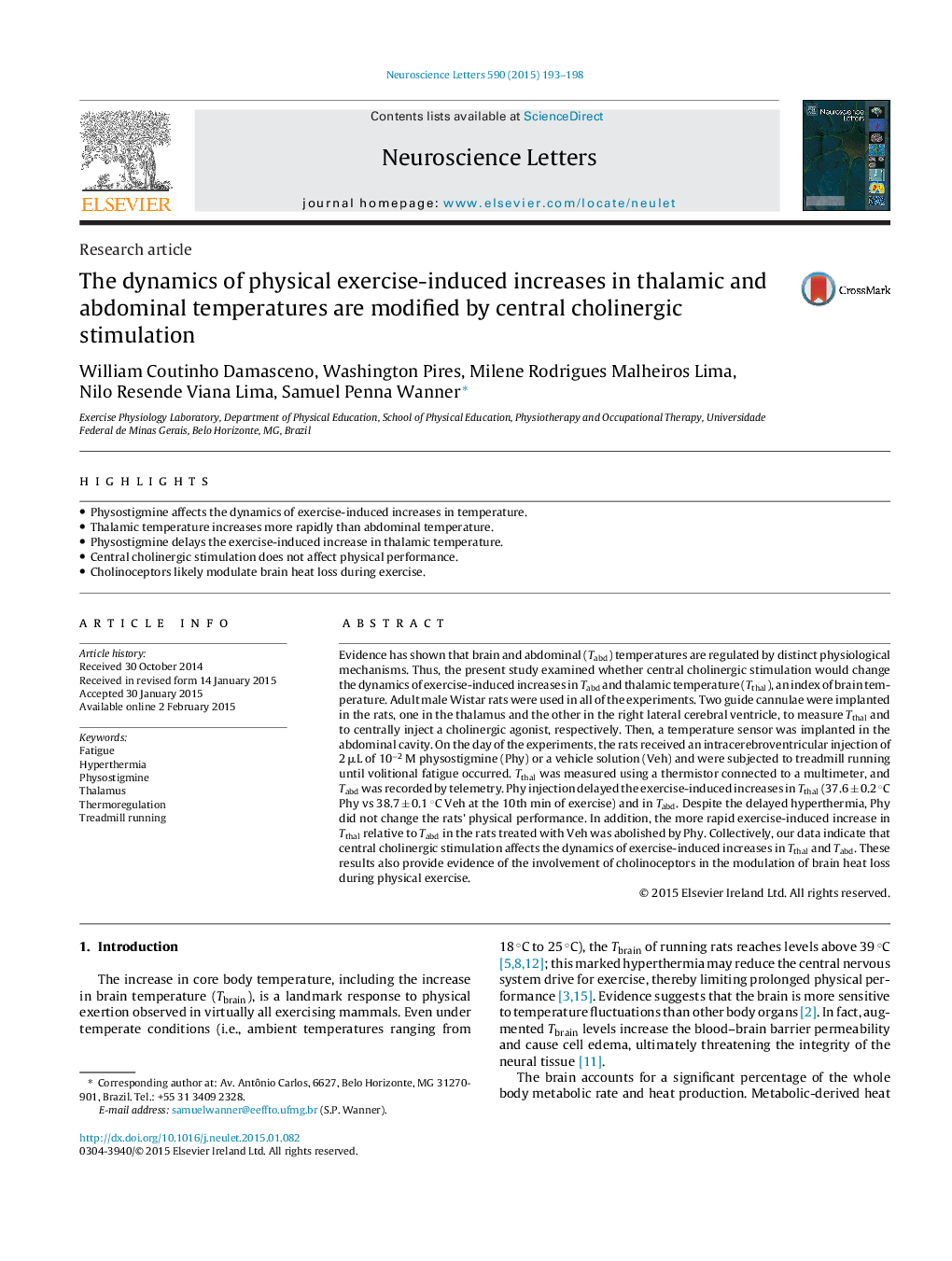| Article ID | Journal | Published Year | Pages | File Type |
|---|---|---|---|---|
| 6280831 | Neuroscience Letters | 2015 | 6 Pages |
Abstract
Evidence has shown that brain and abdominal (Tabd) temperatures are regulated by distinct physiological mechanisms. Thus, the present study examined whether central cholinergic stimulation would change the dynamics of exercise-induced increases in Tabd and thalamic temperature (Tthal), an index of brain temperature. Adult male Wistar rats were used in all of the experiments. Two guide cannulae were implanted in the rats, one in the thalamus and the other in the right lateral cerebral ventricle, to measure Tthal and to centrally inject a cholinergic agonist, respectively. Then, a temperature sensor was implanted in the abdominal cavity. On the day of the experiments, the rats received an intracerebroventricular injection of 2 μL of 10â2 M physostigmine (Phy) or a vehicle solution (Veh) and were subjected to treadmill running until volitional fatigue occurred. Tthal was measured using a thermistor connected to a multimeter, and Tabd was recorded by telemetry. Phy injection delayed the exercise-induced increases in Tthal (37.6 ± 0.2 °C Phy vs 38.7 ± 0.1 °C Veh at the 10th min of exercise) and in Tabd. Despite the delayed hyperthermia, Phy did not change the rats' physical performance. In addition, the more rapid exercise-induced increase in Tthal relative to Tabd in the rats treated with Veh was abolished by Phy. Collectively, our data indicate that central cholinergic stimulation affects the dynamics of exercise-induced increases in Tthal and Tabd. These results also provide evidence of the involvement of cholinoceptors in the modulation of brain heat loss during physical exercise.
Related Topics
Life Sciences
Neuroscience
Neuroscience (General)
Authors
William Coutinho Damasceno, Washington Pires, Milene Rodrigues Malheiros Lima, Nilo Resende Viana Lima, Samuel Penna Wanner,
